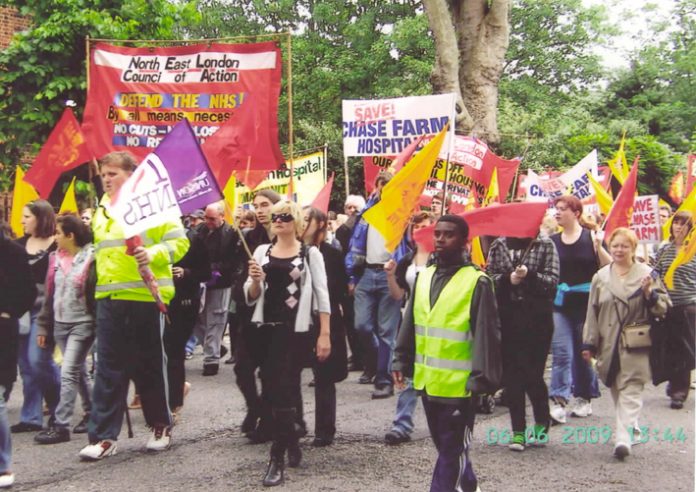
HOSPITALS are facing closure across London as the government begins making savage cuts to the NHS budget to deal with its debts crisis.
With the prospect of looming budget cuts, health bosses in the capital have been told to ‘rethink the provision of services’.
But angry opponents of planned cuts and closures said yesterday that the ‘public consultation’ exercises being conducted across London are a sham and patients’ lives will be put at risk.
One plan is to shut the busy King George Hospital A&E department in Ilford as well as the hospital’s maternity services.
This plan is being revived after attempts to close King George three years ago were beaten back.
This attack is part of a wave of closures planned across north-east London, including Chase Farm Hospital.
Under these plans care will be delivered ‘away’ from hospitals, with 75 per cent of A&E patients being sent to ‘polyclinics’ instead, under a new cost-cutting ‘model’ of healthcare – with the fate of the other 25 per cent of patients unclear.
Ilford South Labour MP Mike Gapes said that the consultation exercise at King George Hospital, which is due to report back in the spring, would be ‘about as free and fair as a rigged Afghan election!’
‘They were defeated three years ago on their previous attempt to close the A&E at King George Hospital and reduce the local services for people living in Ilford,’ Gapes added.
Similar cuts are planned across the capital in the next year.
Under the North Central London Service Organisation Review, the Chase Farm and Whittington hospitals are to be closed.
Whittington’s A&E is to be shut, with a minor ‘local hospital’ left on the site, to be ‘merged’ with the Royal Free Hospital in Hampstead.
‘Options’ for Barnet and North Middlesex hospitals involve one of them closing as a major acute hospital, also to be replaced by a ‘local hospital’ with skeleton casualty and maternity services.
There would be no 24-hour emergency surgery facility, no stroke or major trauma unit and no admission to the maternity department of women classed as high-risk.
The plan is for existing hospital sites to be bulldozed and the land sold off.
Patients will be offered ‘Tesco Metro-style’ services at much smaller sites instead.